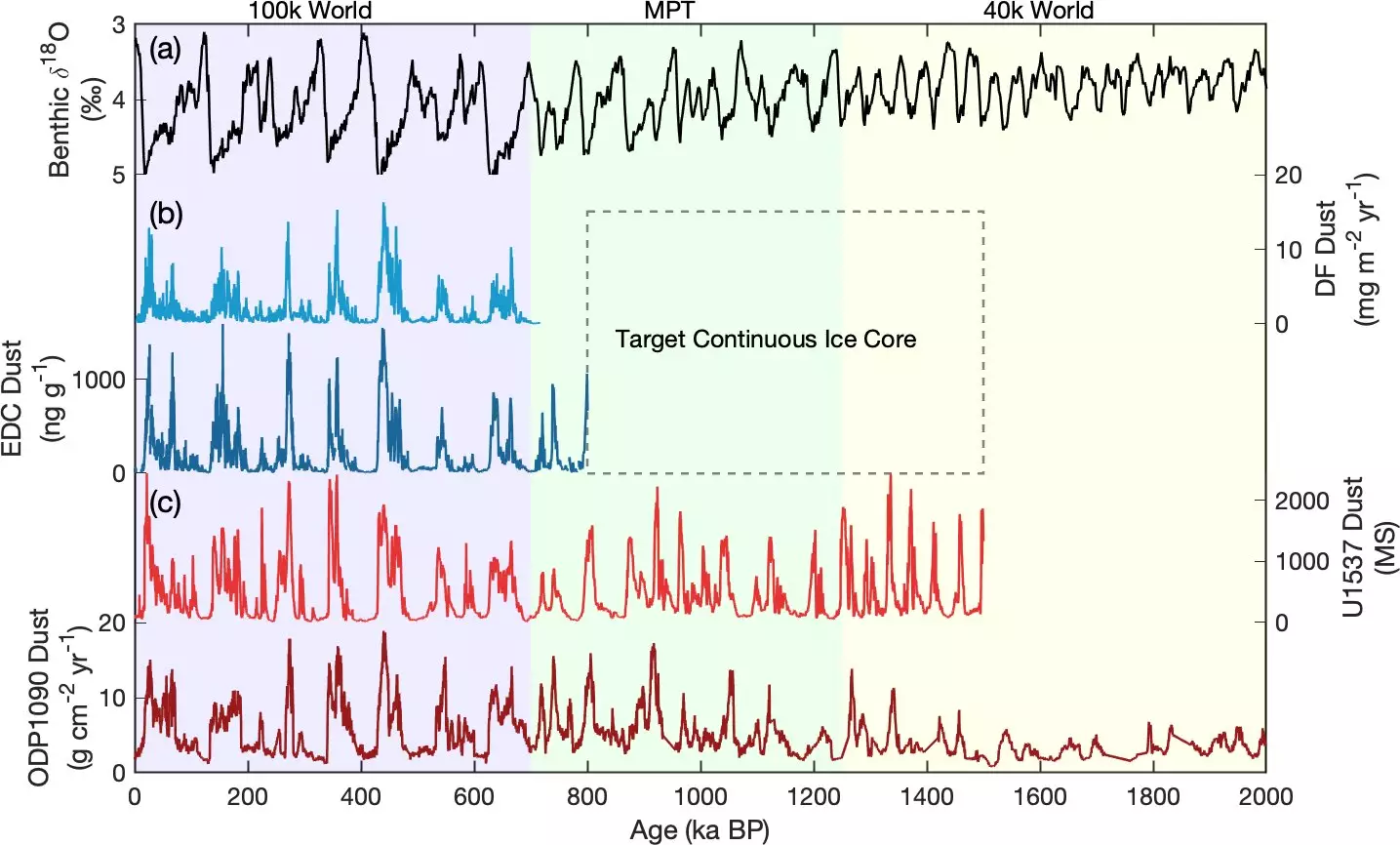The Earth’s climate has undergone significant transformations across its extensive history, with various periods marked by vast ice coverage. In contemporary times, scientists are increasingly relying on ice cores as critical tools to decode the planet’s climatic past. These cores serve as time capsules, revealing past atmospheric conditions through the preservation of geochemical signatures and trapped particulate matter. Analyzing these layers can illuminate not only the temperature fluctuations but also the prevailing environmental conditions—the so-called “snapshot” of a bygone era.
One notable aspect of ice core analysis is the interplay between dust levels and climatic periods. Elevated dust concentrations within ice cores can often point to glacial periods, triggered by factors like reduced precipitation, increased aridity, and enhanced wind activity leading to greater dust transport. Such indicators are invaluable in reconstructing climate conditions during ancient glacial epochs.
The oldest continuous ice core from Antarctica, The European Project for Ice Coring in Antarctica Dome C (EPICA Dome C), extends back an impressive 800,000 years. However, a collaborative initiative is underway aimed at extending this record to 1.5 million years. This extension is crucial for understanding Earth’s climatic oscillations, which alternate between glacial and interglacial states on a cyclical basis. Periodicity dominated by ~41,000-year cycles occurred up until about 1.2 million years ago, after which the cycles elongated to ~100,000 years up until the present.
Collecting sample cores from significant depths is not without its challenges; the shifting topography caused by dynamic glaciers can disrupt stratification, while basal melting threatens to obliterate ancient records. Therefore, meticulous reconnaissance missions play a vital role in pinpointing optimal drilling sites. Once a suitable site is located, researchers expedite recovery techniques, including the strategic melting of upper layers to access deeper ice.
Recent studies, including one published in *Climate of the Past*, have spotlighted International Ocean Discovery Program Site U1537, situated near South America, as a promising site for ice core dating based on its marine dust content. Dr. Jessica Ng from the Scripps Institution of Oceanography and her colleagues analyzed marine dust particles from a series of cores collected from the southern Atlantic Ocean. By spanning comparisons between different sites, the research team evaluated the provenance of dust—the origin of particles shows a progressive narrative of atmospheric conditions during different epochs.
The findings suggested that Site U1537 housed a marine dust record potent enough for comparison with the ice dust of EPICA Dome C. This comparative approach led researchers to create synthesized “Oldest Ice” records, which allowed for meticulous pattern matching to ascertain chronological alignment. Although the studies confirmed the correlation of records up to 800,000 years, discrepancies beyond that time frame hinted at geographical variances in dust deposition across the high-latitude southern hemisphere.
The research does not only strive to extend the time frames of ice records but also seeks to unravel the mysteries behind significant climatic shifts, particularly the mid-Pleistocene transition—a pivotal point in Earth’s climate history. Dr. Ng and her fellow researchers highlighted prior investigations that suggested mechanisms such as eroding regolith facilitating the formation of thicker ice sheets and glacial cooling influenced by tectonic movements, though further research is necessary to clarify their roles and implications.
This research sheds light on the cyclic nature of Earth’s climate: the ramifications of ~40,000-year and ~100,000-year cycles result in varying feedback mechanisms on planetary systems. Such knowledge is pivotal for comprehending the intricacies of climatic changes and their broader implications for contemporary climate science. As we deepen our understanding of historical climate patterns through ice cores, we not only illuminate our planet’s past but also forge a pathway toward addressing the challenges posed by present and future climate variability.


Leave a Reply